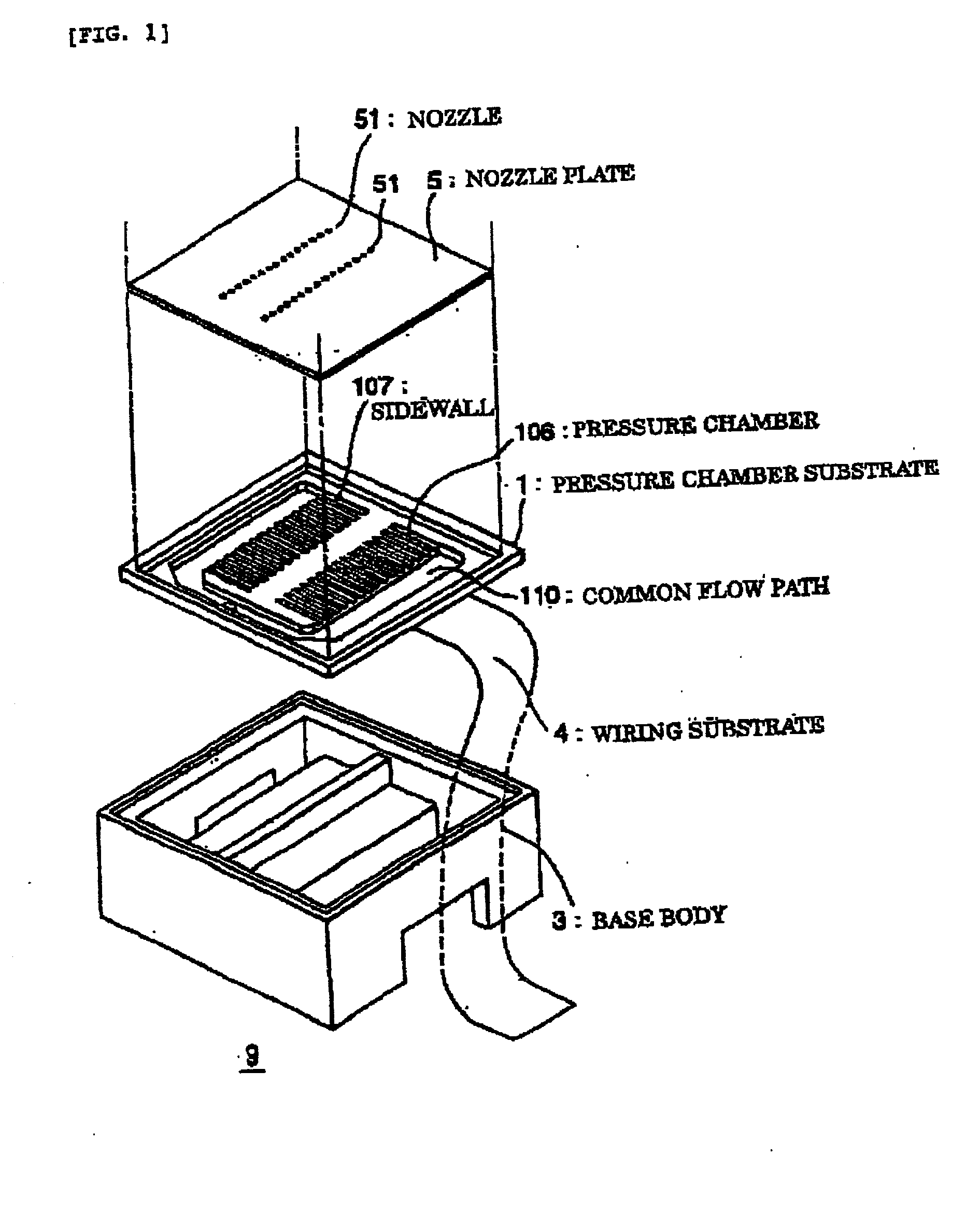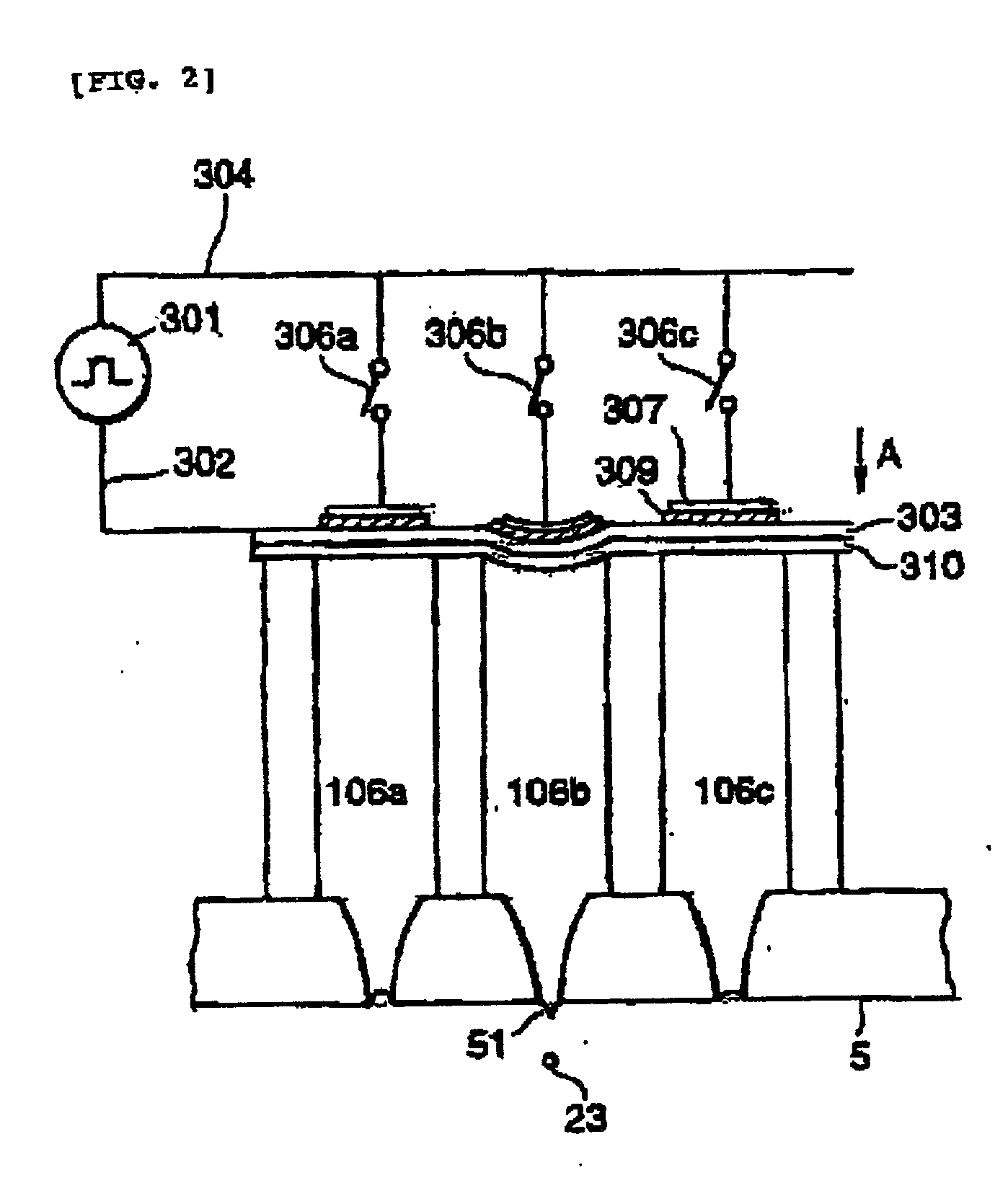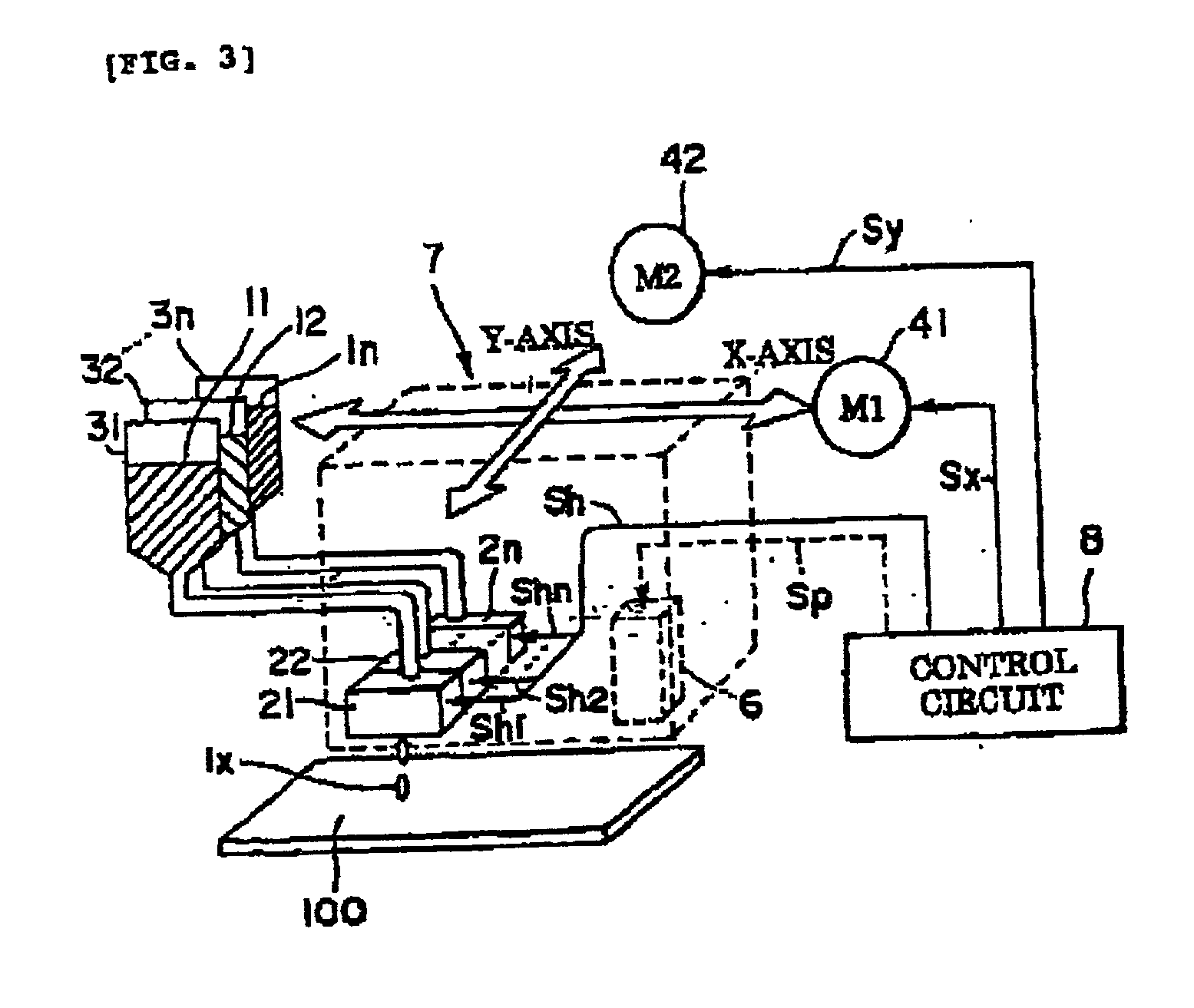Memory device and manufacturing method therefor
a memory device and manufacturing method technology, applied in the field of memory devices, can solve the problems of high cost of manufacturing photomasks, high price of rom semiconductors manufactured using photomasks, and the below-mentioned problems
- Summary
- Abstract
- Description
- Claims
- Application Information
AI Technical Summary
Benefits of technology
Problems solved by technology
Method used
Image
Examples
example 2
[0072] Cross-sectional views of manufacturing steps of Example 2 according to this embodiment are shown in FIGS. 6(a)-6(f). In this example, as is the case with Example 1, the following steps are provided: a step of lower electrode formation, a step of inkjet ejection, a step of semiconductor layer formation, and a step of upper electrode formation. In addition, a step (a step of surface treatment) is provided in which an area is formed having non-affinity for an insulating material so as to surround the surfaces of electrodes at memory cell positions.
[0073] Since the step of lower electrode formation (FIG. 6(a)), the step of semiconductor layer formation (FIG. 6(e)), and the step of upper electrode formation (FIG. 6(f)) are equivalent to those in Example 1, descriptions therefor are omitted. The step of surface treatment (FIG. 6(b)) is performed after the step of lower electrode formation and before the step of inkjet ejection.
[0074] Step of Surface Treatment (FIG. 6(b)): A non-aff...
second embodiment
[0080] Second Embodiment
[0081] A second embodiment of the present invention relates to a method for manufacturing a memory device, in which multiple level memory states can be realized by injecting a doping material into semiconductor layers at memory cell positions by using an inkjet head so that the resistances of the semiconductor layers are each in one of a plurality of desired ranges preliminarily determined in accordance with n level memory states (n=2, or n>2).
[0082] Cross-sectional views of manufacturing steps of this embodiment are shown in FIGS. 9(a)-9(e). In this embodiment, as is the case with first embodiment, the following steps are provided: a step of lower electrode formation, a step of semiconductor layer formation, a step of inkjet ejection, and a step of upper electrode formation. However, this embodiment differs from first embodiment, in that, after the step of lower electrode formation, the step of semiconductor layer formation is performed, and the step of inkj...
third embodiment
[0093] Third Embodiment
[0094] A third embodiment of the present invention relates to a method for manufacturing a memory device, in which a predetermined semiconductor material is selected in accordance with a state to be stored from among n types of semiconductor materials which are controlled so that the resistances thereof are in predetermined ranges in accordance with n level states (n=2, or n>2), and the selected semiconductor material is selectively ejected to an area surrounded by the bank by using an inkjet head, whereby the resistance of the semiconductor layer of each memory cell is determined.
[0095] Cross-sectional views of manufacturing steps of this embodiment are shown in FIGS. 10(a)-10(f). In this embodiment, the following steps are provided: a step of lower electrode formation, a step of bank formation, a step of inkjet ejection, and a step of upper electrode formation.
[0096] In this embodiment, instead of the step of bank formation, a step (a step of surface treatme...
PUM
 Login to View More
Login to View More Abstract
Description
Claims
Application Information
 Login to View More
Login to View More - R&D
- Intellectual Property
- Life Sciences
- Materials
- Tech Scout
- Unparalleled Data Quality
- Higher Quality Content
- 60% Fewer Hallucinations
Browse by: Latest US Patents, China's latest patents, Technical Efficacy Thesaurus, Application Domain, Technology Topic, Popular Technical Reports.
© 2025 PatSnap. All rights reserved.Legal|Privacy policy|Modern Slavery Act Transparency Statement|Sitemap|About US| Contact US: help@patsnap.com



